Getting to Know the Bathtub Marys of Somerville, Massachusetts
A local anthropologist has spent a decade photographing the unlikely statues.
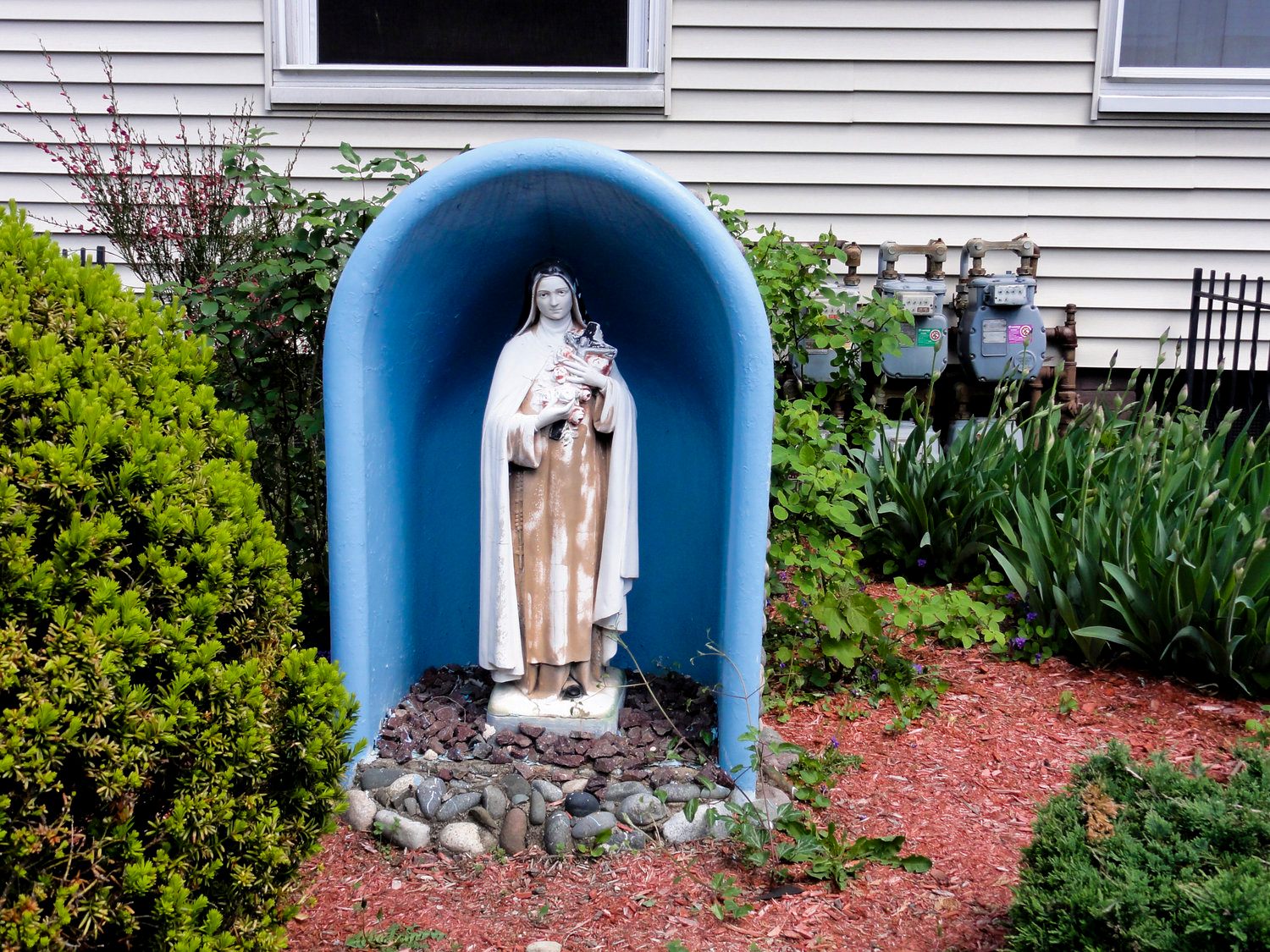
Somerville, Massachusetts doesn’t attract many pilgrims. Spend enough time walking its narrow streets, though, and you’re guaranteed a particular kind of religious experience. It may reveal itself proudly in a front yard, or sneak up on you in a side yard. But eventually, undoubtedly, you’ll be blessed by the presence of a Bathtub Mary: a sculpture of the Madonna, generally about waist-high, carefully sheltered in its own protective nook.
Although these constructions aren’t unique to Somerville—there are plenty in the Midwest, as well as other Massachusetts towns—aficionados agree that they’ve colonized the city to an unusual degree.
“You can find Catholic statuary in the yards of other communities … where Catholic immigrants of Italian, Portuguese and Irish origin and their descendants have resided for decades,” writes Deborah Pacini, an anthropologist and Somerville resident who has been photographing the shrines for about 10 years. “But it is unlikely that you will find so many in such a small concentrated area, and in such variety of forms, [anywhere other] than in Somerville.” The city has, by some counts, at least 600 such shrines.
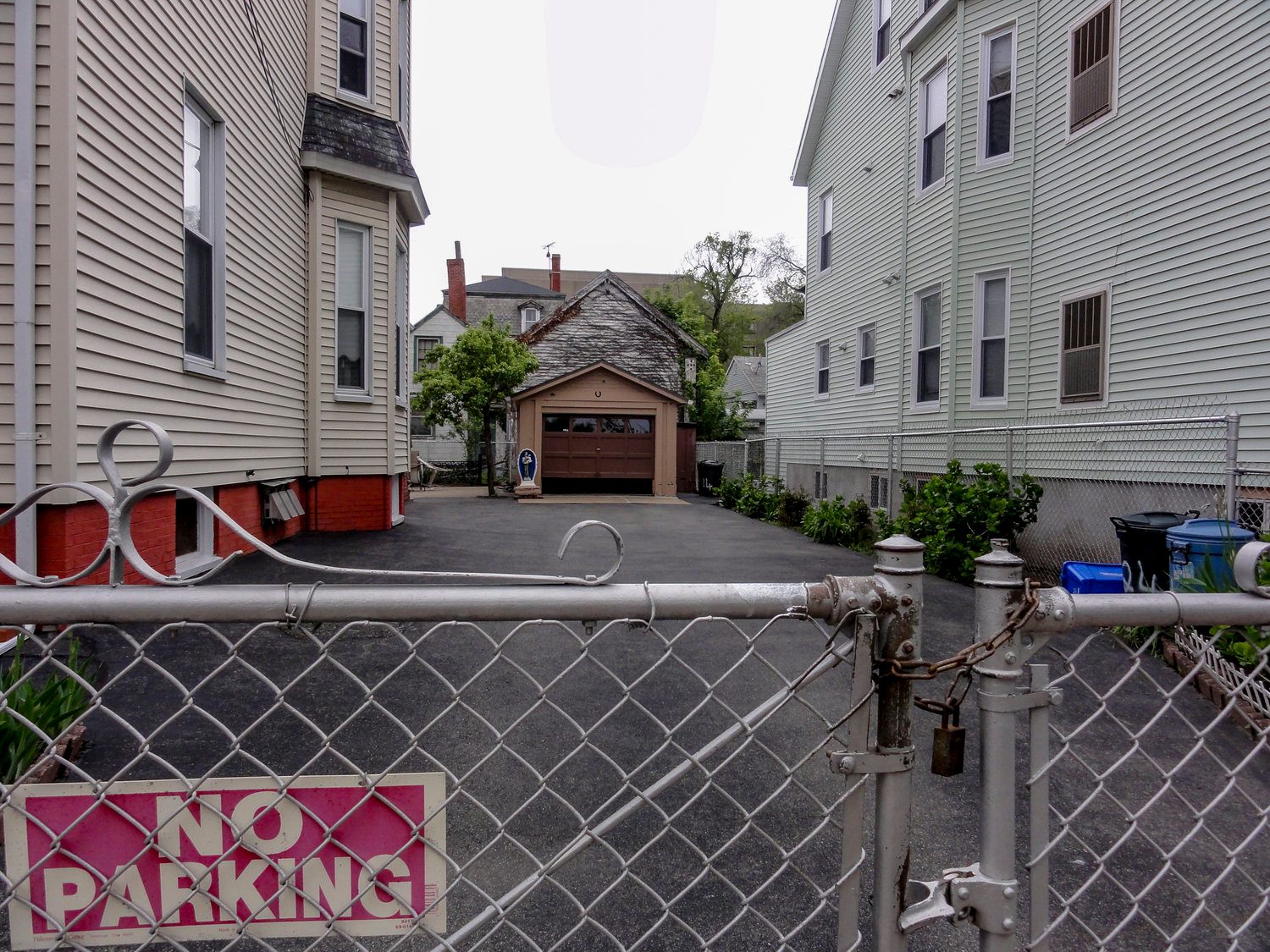
Bathtub Marys get their name from the structures they’re typically placed in: actual bathtubs, tipped up vertically and dug halfway into the ground to form graceful, arched shelters. Although domestic shrines and home altars are a long-lived Catholic tradition, it’s thought that this particular incarnation began just after World War II, when postwar economic recovery led to a rash of home remodeling. Families installed shower-bathtub combos, and their old claw-footed tubs, which were difficult to recycle, ended up out in the yard, repurposed as religiously inflected lawn art.
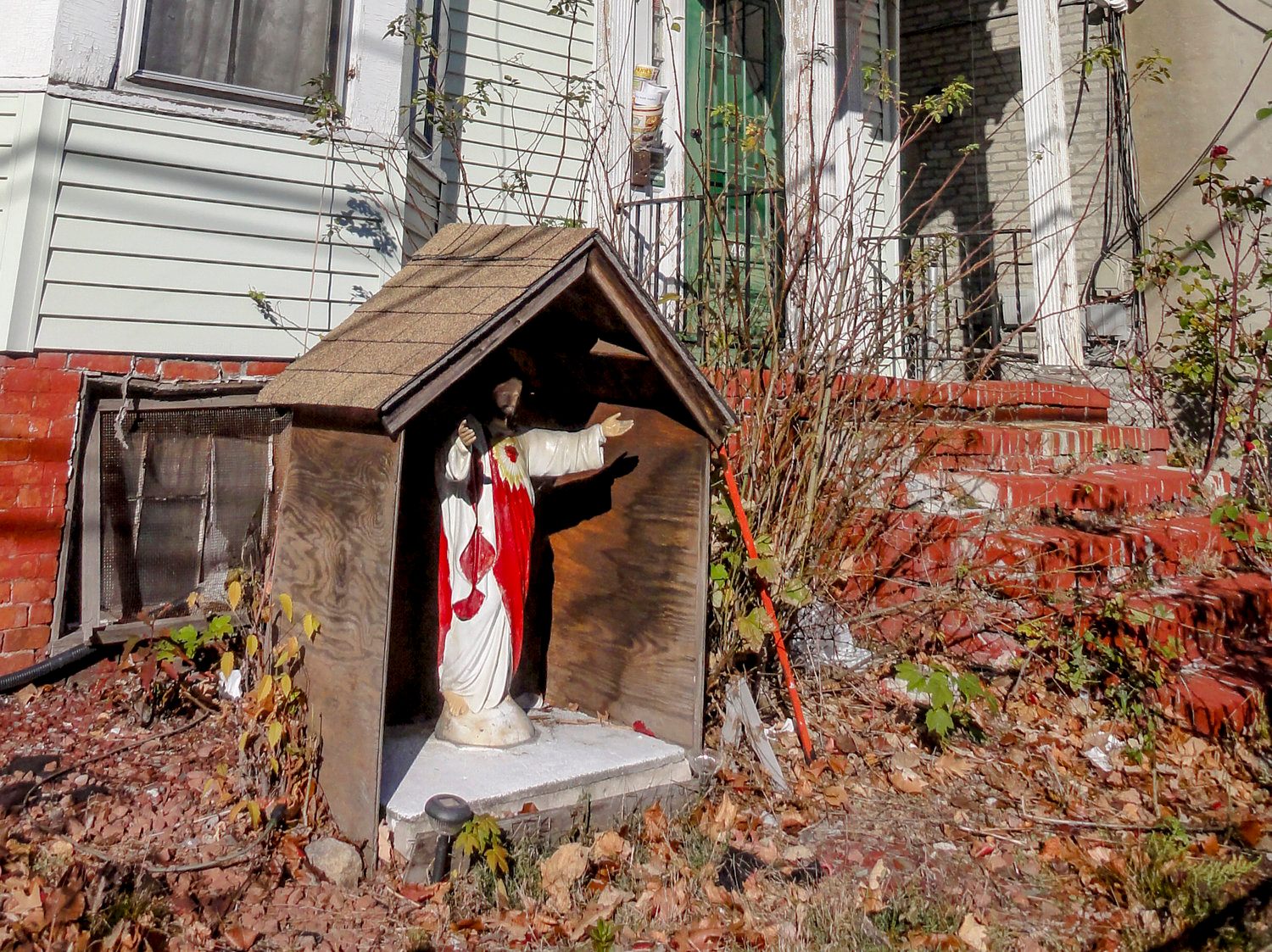
Those who lack a bathtub at the crucial moment often provide other creative housing: Pacini has photos of the statues taking refuge under grape arbors and hand-built stone arches, and in miniature wooden cabins and wishing wells. Less crafty types take advantage of store-bought concrete domes, many of which have scalloped edges—thus the statues’ other tongue-in-cheek nickname, “Mary on the Half Shell.”

With the character and basic setting taken care of, aesthetic innovation runs rampant. A Mary might be surrounded by an attentive pack of plastic dogs, or lit year-round by a single rigged-up Christmas bulb. Other holiday seasons make for unlikely tableaus: Mary hanging out with Uncle Sam, Jesus sharing space with inflatable pumpkins. “There’s a sort of folk art impetus here,” says Pacini. “People want to keep up with the neighbors.”
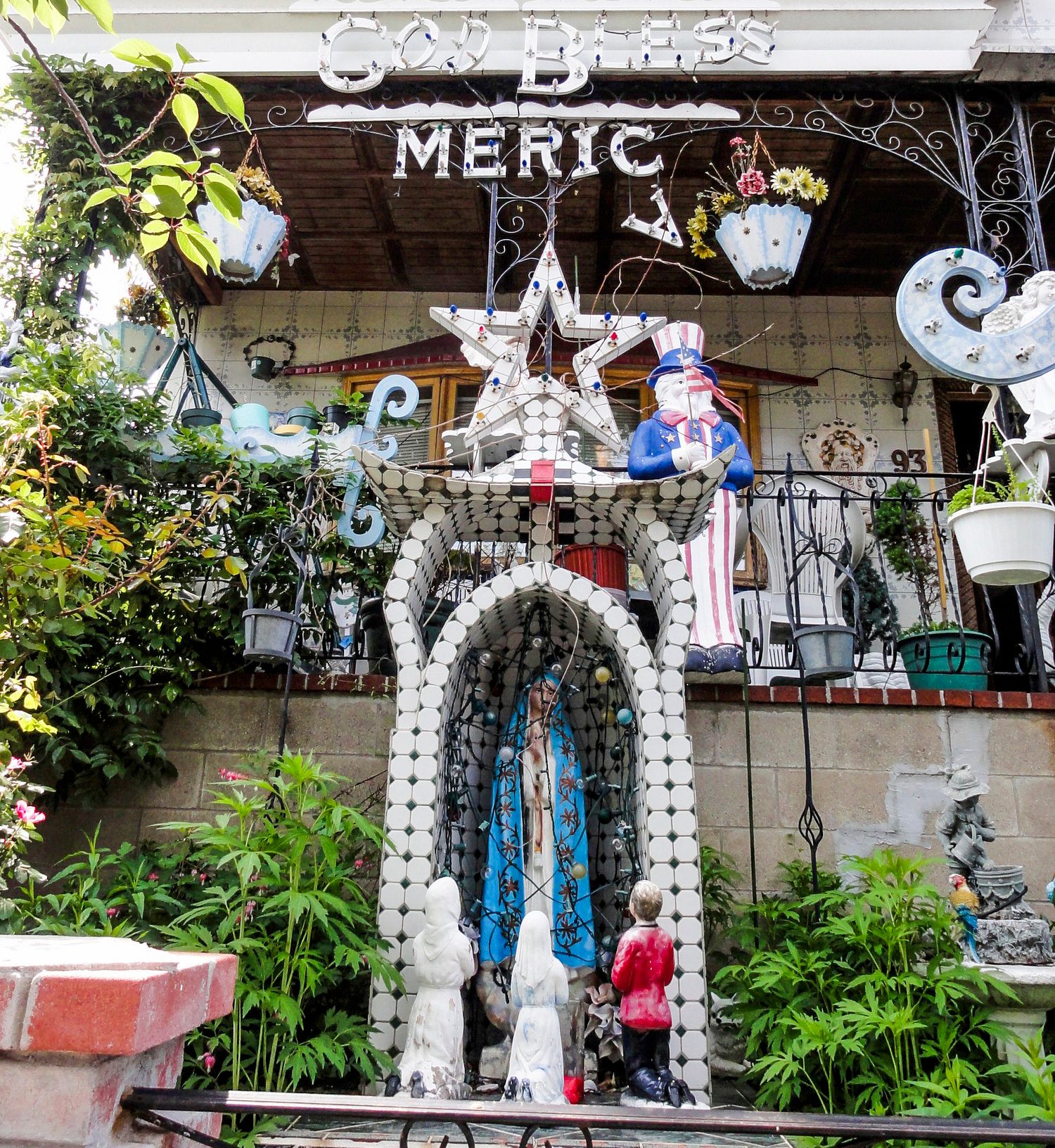
Pacini is far from the first Somervillian to be captivated by the statues. Cathy Piantigini, a lifetime resident and children’s librarian, has spent the past few years walking every street in the city in an attempt to map them. A local brewery, Slumbrew, has even put out a limited-edition beer called the Bathtub Mary. (It’s a pale wheat ale.) Some of the city’s newer residents have put their own spin on things—one bathtub arch now houses a toy robot.
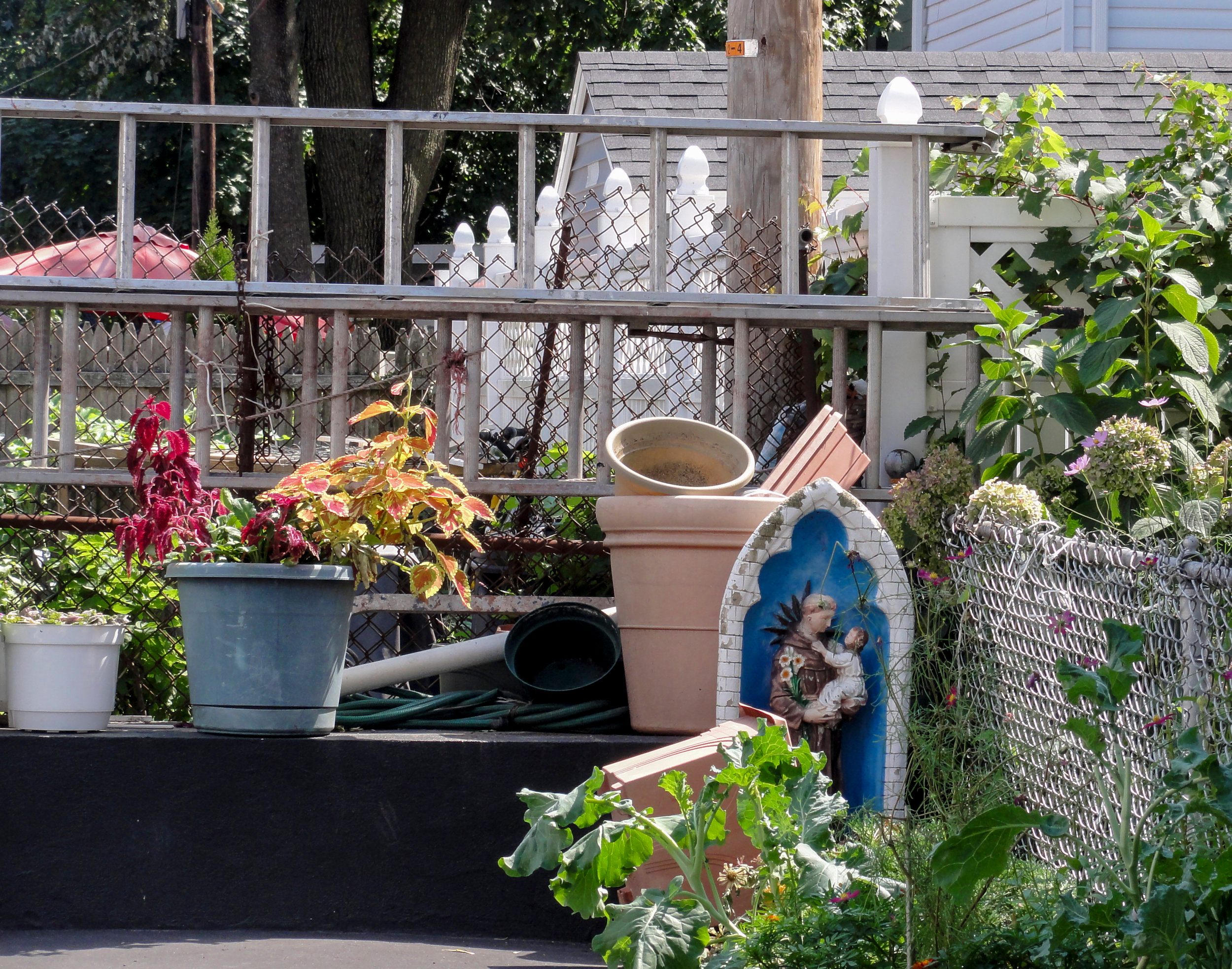
For Pacini, the attraction is largely aesthetic—she loves the shrines’ “richness and vitality,” she says. But they also act as reverse bellwethers, coal mine canaries for a city that is experiencing rapid demographic and physical change. Property prices are rising, and family apartments are being redeveloped into condos. “When I see a realtors’ sign in front of a house with a shrine, I see an ominous portent,” writes Pacini. Occasionally, she’ll come across an empty bathtub, the former home of a Mary that has been displaced along with its family.

It’s a trend that seems both sad and inevitable: Even Pacini, despite her love for the Marys, does not have one of her own. “I’ve been tempted,” she says. “But I haven’t gotten one yet.”
You can see the rest of Pacini’s pictures, along with her commentary, on her project website.
*Correction: This post previously identified several statues as Marys when they were actually other saints.


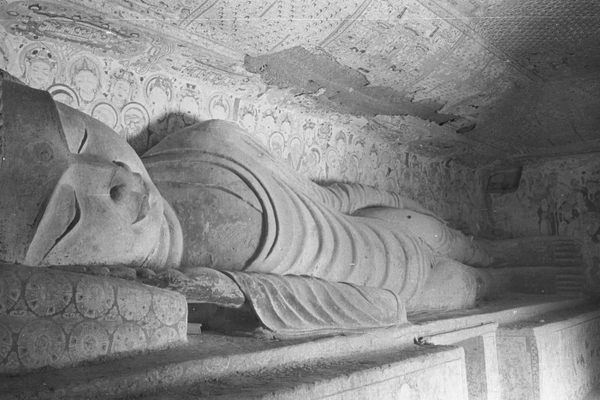














Follow us on Twitter to get the latest on the world's hidden wonders.
Like us on Facebook to get the latest on the world's hidden wonders.
Follow us on Twitter Like us on Facebook